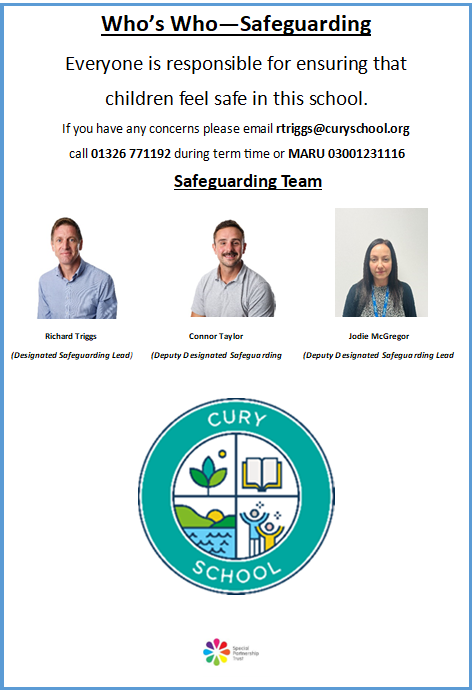Safeguarding
At Cury School, the safety, welfare, and well-being of our students are paramount. We are committed to creating a nurturing environment where every child feels safe, valued, and respected.
We adhere to robust safeguarding procedures to ensure that all children are protected from harm, abuse, neglect, and exploitation. Our staff are trained to recognise signs of concern and are dedicated to responding promptly and appropriately to any safeguarding issues that may arise.
We work in partnership with parents, carers, external agencies, and the wider community to promote a culture of safeguarding and to provide support and guidance to those who need it.
Through our curriculum and pastoral care, we empower our students with the knowledge, skills, and confidence to keep themselves and others safe, both online and offline.
Together, we strive to create a safe and inclusive learning environment where every child can thrive and achieve their full potential.
Intent
Implementation
Impact

SPT and Cury School safeguarding information
- Keeping children safe in education - GOV.UK (www.gov.uk)
- SPT Safeguarding and Child Protection Policy
- Job description DSL
Operation Encompass
- What is Operation Encompass?
- Operation Encompass -Decision-Making-Model
- Operation Encompass-Statement-for-Safeguarding-Policy.pdf
- Operation Encompass
- OE School to Parent letter
Other safeguarding organisations guidance and information
- Guidelines Female Genital Mutilation Multi-Agency Practice
- Prevent strategy
- The seven golden rules to sharing information
- NSPCC - Fighting for childhood
- NSPCC Executive summary
- TES Safeguarding resources
LADO leaflets/information







